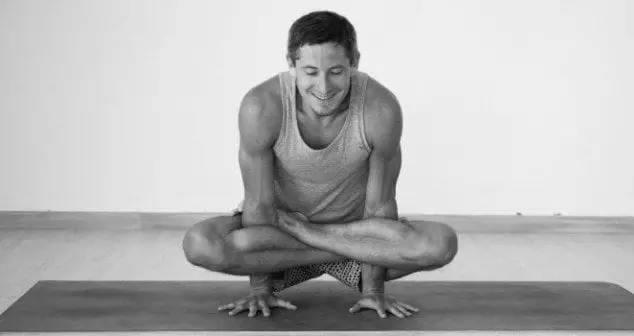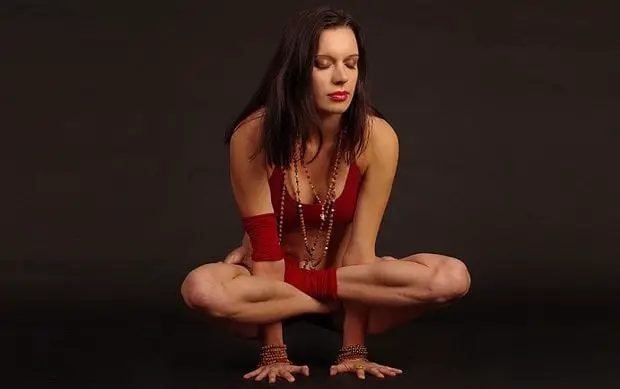Looking for a yoga pose to strengthen your core and arms! We may offer something interesting to you. Kukkutasana is a strenuous yoga asana that targets the muscles of arms and core, it also requires to have a sense of balance and stability. This pose is recommended to be practiced by intermediate or advanced yoga practitioners. For its beginners, it is quite challenging since the base position for it is Padmasana which itself requires a lot of patience and time.

Several yoga poses are named after animals or are inspired by some particular quality of them. Similarly, the name of this pose is named after a bird. The Sanskrit name Kukkutasana is derived from two Sanskrit words whose meaning are as:
Kukkuta = cockerel or rooster
Asana = comfortable seat or posture
The shape of the body in the final position of Kukkutasana resembles that of a cockerel.
Steps to practice Kukkutasana (Cockerel Pose)
Practice Cockerel Pose only if you have become quite comfortable with Lotus pose and have adequate strength in your arms and wrists. It is advised to practice in the presence of a yoga instructor.
Starting Position: Padmasana (Lotus Pose)
- Insert your hands between your calves and thighs, push your arms through the legs up to the elbows.
- Spread the fingers and place the palms firmly on the ground. Keep the fingers pointing forward.
- Inhale and press the palm against the floor to lift your body off the ground.
- Balance the weight of the body on your hands using the strength of your arms and core.
- Keep the spine erect. To maintain balance in the pose, choose a point in front of you and focus your gaze on it. After mastering the pose you may keep the eyes closed.
- Retain the position for a few seconds without straining your arms, breathing normally.
- To return, exhale and slowly lower the body on the ground, release the arms and come back in starting position. Take deep and slow breaths.
- Interchange the position of legs in Lotus Pose and practice the pose again.

In the beginning, it is enough to hold the final position for a few seconds. With regular practice, one can easily develop the required strength to balance without any trouble. As your arms build more strength, you may extend the practice from 1-5 minutes gradually.
Practice Note: People having excess fat in legs or having very hairy skin will face trouble while inserting the hands between calves and thighs. To minimize this problem you may apply oil on your legs. That will make the passing of hands easier.
Precautions for Kukkutasana (Cockerel Pose)
- Keep the spine erect as hunching will lead to misalignment of the body in the pose.
- Avoid practicing Cockerel Pose in case you suffer from any of these: high blood pressure, heart or lung problems, back pain, hernia, prolapse, gastric ulcers, enlarged spleen or knee injuries.
- People who have weak wrists or injured wrists, weak elbow or shoulder must also avoid practicing Kukkutasana.
- Don’t hold the pose for too long as that may strain the muscles of arms. Practice as per your strength and capability.
Benefits of Kukkutasana (Cockerel Pose)
- Strengthen the muscles of arms and shoulders, stretches chest.
- Strengthen wrists, elbows and abdominal muscles thus aids digestion.
- Develops a sense of balance and stability.
- Helpful in stimulating Mooladhara Chakra.
- Contracts and strengthens perineum.
Recommended articles:
- Chakrasana (Wheel Pose): steps, cautions & benefits
- Matsyasana (Fish Pose) l Benefits of Matsyasana
- Vajrasana (Thunderbolt Pose) steps, precautions & benefits
Stay healthy stay strong and get the best out of life.
Connect with us using the comments section below. Take a moment to share the article with your friends and family if you found it useful or interesting.
Thanks for reading.Visit Again.
